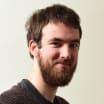What is a plug-in hybrid? PHEV technology explained
Learn more about plug-in hybrid cars and vans, also known as PHEVs, how they work and why you should buy one

The automotive world is changing quickly. Where before customer choice didn’t extend much beyond ordinary petrol and diesel cars and vans, there are now those plus fully-electric cars and several different types of hybrid cars, too. One that you’ve probably read about is the plug-in hybrid, which we’ll explain more about here.
A plug-in hybrid electric vehicle (PHEV) is a type of car or van that has both a normal engine that uses petrol or diesel fuel and one or more electric motors as well. Where it differs from other types of hybrid is that there is also a way to charge the battery up using an external plug like you would with an electric car.
Examples of plug-in hybrid cars include the Skoda Octavia iV and the Mercedes C 300 e, which are both petrol-electric plug-in hybrids. Diesel-electric plug-ins are much less common, but Mercedes did also offer a C 300 de model, which was a popular company car for several years thanks to its fuel economy on longer trips.
‘Traditional’ hybrid cars - also known as ‘full hybrids’, or simply ‘hybrids’ - usually have a small battery of under 2kWh in capacity. This is able to hold enough charge to drive the car for only a mile or so on electric power alone so hybrids usually drive on power from the petrol engine with assistance from the electric motor. The engine is used to keep the battery charged, along with some other clever tech that uses the brakes to generate power as well. Examples of full hybrid cars include the Toyota Corolla and Honda Civic.
Plug-in hybrids are also able to self-charge using their petrol or diesel engines, but they usually have a much larger battery pack. The size varies a lot, but the average is about 22kWh, giving an electric range of 25 to 50 miles on electric power alone in most cases. Recently the electric ranges have been increasing, however, with the new Volkswagen Golf GTE able to cover 82 miles on EV power when tested on the WLTP combined cycle.
The size of the battery in a plug-in hybrid means that it would take a lot of fuel - and time - for the engine to charge it up. Instead, plug-in hybrids are intended to be plugged into the mains, hence the name. It will usually take a few hours to charge the battery, and many owners of these cars use lower-cost overnight electricity rates to keep costs down too.
Why should I choose a plug-in hybrid?
Plug-in hybrids are a halfway house between petrol and diesel vehicles and fully electric ones. While those who exclusively do long journeys will only be interested in combustion power and those doing only short trips can go all-electric easily, PHEVs are great for those who do both.
If you have a short commute of under 30 miles - or however long the range of your chosen PHEV is - then you can use the electric range to do this for a very low cost, just like with an electric car. Yet for long holiday trips where charging an EV is a pain, you can use petrol or diesel to keep things convenient.
Plug-in hybrids aren’t well-suited to those with a varied lifestyle, though. Driving without using electric power tends to be less economical than in a conventional petrol car as the weight of the batteries brings efficiency down. If you regularly drive a lot of miles you’ll pay more for fuel than you would with a normal petrol or diesel in a lot of cases.
However there’s also the matter of company car tax, which is significantly lower on plug-in vehicles. This means that for certain drivers it can be cheaper to get a company PHEV than a petrol equivalent, despite not being able to make best use the electric range, simply because of the tax savings.
Plug-in hybrids with longer official electric ranges are cheaper to tax. As long as the CO2 emissions are under 50g/km, cars that can do between 70 and 129 miles are taxed at 5% compared to 12% for cars that can do 30 to 39 miles. Full electric cars are taxed at 2% in the Benefit-in-Kind scale.
How do plug-in hybrids drive?
There’s hardly any difference in normal driving between a plug-in hybrid and any other type of car. All are automatic only - there are no manual gearboxes in hybrid cars these days - so they are really easy to drive, and switching between electric and petrol (or diesel) power is seamless and automatic. You don’t have to do anything other than drive normally.
Most plug-in hybrids have driving modes that let you choose what the engine and electric motors do. You can set them to drive on electric power only, which is great for a short commute as you won’t use a drop of petrol until the battery runs low. The engine will then automatically turn on when needed.
You can also set a plug-in hybrid to use both power methods together to maximise fuel economy on a longer trip, or set it to use the engine only and preserve battery power for later. You could then use the electric-only mode when conditions are ideal for it, such as in a traffic jam or city centre.
Why do plug-in hybrids have such high MPG figures?
You’ll often see plug-in hybrids with unbelievable fuel economy figures. It’s not uncommon to see 100mpg, 200mpg and even up to 500mpg on the spec sheets of certain plug-in hybrid cars. That’s well over double what you would expect from an equivalent non-plug-in hybrid car - so are PHEVs twice as economical?
The answer is that it really depends, but in general you should consider these figures to be misleading at best.
Official fuel economy figures are a good way of comparing cars, since they are done under repeatable laboratory conditions rather than in the real world. It just so happens that plug-in hybrids are excellent under the tested conditions and return staggeringly high MPG figures as a result. The secret is that plug-in hybrids start the official WLTP test cycles with a fully charged battery and with the test cycle being only 14.4 miles long, they can rely heavily on electric power for most of it, using hardly any fuel.
In the real world, a PHEV will do slightly worse MPG than a petrol car with an identical engine if the battery is depleted, because it will be heavier. However, you shouldn’t really drive like this - keep the battery topped up and you’ll see much better economy. You can read our reviews of individual models to see our estimates for real-world fuel economy, but if a petrol car does about 40mpg then you might expect to get 60-plus in a PHEV equivalent in hybrid mode.
However, if you fill up the tank with petrol, drive to work every day for a year (e.g. 260 days times 30 miles) on electric power only and then do one journey that empties the 40-litre tank, that could work out at 900mpg. It’s possible, but not that plausible for most owners.
Do you need to service plug-in hybrids more often?
Plug-in hybrids have two power methods: an engine and one or more electric motors. PHEVs need servicing just as often as a normal petrol or diesel vehicle, but the service will include any work needed for the battery or electric motors. You won’t have to worry about extra time spent at the garage.
Plug-in hybrids also cost less to tax than petrol and diesel cars, but only by £10 a year. All PHEVs that cost over £40,000 when new - which is a lot of them - attract a further £590 tax annually until they are six years old, too.
Now find out if a hybrid, plug-in hybrid or electric car is right for you...
Find a car with the experts




